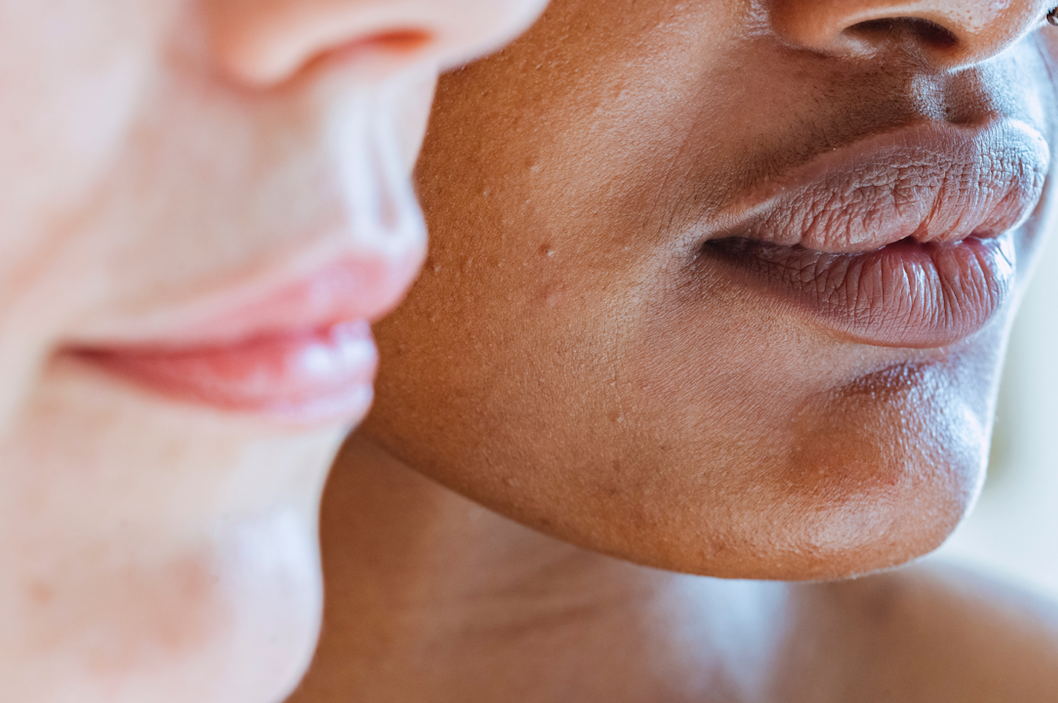What is an allergen?
An allergen is a substance, a compound of molecules to which you are likely to be allergic. During it in contact with the epidermis, your immune system (lymphocyte cells in this case) surreate resulting in various symptoms (due to liberated cytokines) of red, itching, buttons, ... it is an allergy.
There are several types of allergens:
- perfumes
- Filters of solar creams
- Conservatives
- colors
- Texture agents
- Foaming agents
What are the different allergens in cosmetics?
Since 2003, the European Commission has recognized a list of 26 ingredients for which you are likely to make an allergy. According to the European regulation, they must be noted in the Inci (International Nomenclature of Cosmetic Ingredients) if they exceed the following thresholds:
- 0.001% for cosmetics without rinsing (creams, oils, perfumes)
- 0.01% for cosmetics to rinse (shampoos, shower gels)
The list of already 26 allergens tends to grow again because the European Commission wishes to add an additional 62: good news for consumers who claim the right to transparency on their cosmetics.
Here is the list:
• Alpha-isomethyl ionon (synthetic)
• amyl cinnamal (synthetic)
• amylcinnamyl alcohol (synthetic)
• Anise alcohol (natural or synthetic)
• Benzyl alcohol (natural or synthetic)
• Benzyl benzoate (natural or synthetic)
• Benzyl cinnamate (natural or synthetic)
• Benzyl salicylate (natural or synthetic)
• Butylphenyl Methylpropional (synthetic)
• Cinnamal (natural or synthetic)
• Cinnamyl alcohol (natural or synthetic)
• Citral (natural or synthetic)
• Citronellol (natural or synthetic)
• Coumarin (natural or synthetic)
• Eugenol (natural or synthetic)
• Farnesol (natural or synthetic)
• Geraniol (natural or synthetic)
• Hexyl Cinnamal (synthetic)
• hydroxycitronnellal (synthetic)
• HydroxyisoHel 3-Cyclohexe carboxaldehyde (synthetic)
• Isoeugenol (natural or synthetic)
• Limonene (natural or synthetic)
• LINALOOL (natural or synthetic)
• 2-octynoate methodyl (synthetic)
• Evernia prunastri (of natural origin)
• Evernia Furforacea (of natural origin)
Note that essential oils are sometimes considered as high potential allergen, because many people do not support their use on their skin. However, it should be remembered that you have a reaction to an allergen and not to all the ingredients of a cosmetics. Some tolerates better this super concentrated natural ingredient than others.
Another subject divides the world of cosmetics about allergens: perfume. Indeed, the word perfume may reject you when you look at the composition of a cosmetics, because there are indeed allergens in scented substances; But that doesn't necessarily mean you are allergic. The perfume is subject to the same regulations as other allergens (Inci 26 List Ingredients allergenic), there are therefore these restrictions on their dosage, the mentions to be written, ... whose referent is the international fragrance association (IFRA).
What are the symptoms of an allergy to a cosmetics?
• Distinguish irritation vs allergies
Irritation = drying, irritation, sensation, type rash redness, here are the symptoms of irritation. It is therefore a reaction of your skin that has trouble adapting to the cosmetics you offer it; He makes her sensitive. The effects of irritation will stop quickly if you treat the area with soothing care, it will be necessary to replace this cosmetics by another more suitable.
Allergy = allergy is a process on long -term, it is a development of allergy that occurs when, repeatedly exposed to a cosmetics, you observe strong skin reactions, itchy skin (face, body), pimples that you did not have before. In reality you are not allergic to cosmetics itself but to one or more ingredients present in the composition of it. After having noticed these sudden changes it will be better to find which allergen triggers these reactions.
• Distinguish irritating ingredients in conventional cosmetics vs natural
Conventional = methodylisothiazolinone (conservative) + sodium laureth sulfate and sodium- or ammonium lauryl sulfate, + certain ethoxy substances (-eth) taken in the long term + alcohols (including alcohol denatured) + Tensio-actives + vitamin A pure (retinol) and its Derivatives + formaldehyde (hardener) + dmdm-hydrantoin and others + triclosan (preservative) + BHT (preservative) + certain strongly dosed synthetic perfumes, etc.
Natural = certain essential oils (pines, savory, marjolaine, oregano, cinnamon, citrus, "lemony" plants including verbena and beds, and certain mints) + organic alcohol or non-benzyl-alcohol + strongly dosed citric acid + strongly dosed baking soda etc.
• How do you know if you are allergic to a cosmetics?
To find out which allergen you are sensitive to, we often talk about making a " patchT ": Dermatologists use this method by affixing small amounts of allergen on your skin (shoulder, arms, back) to observe over several days. On your scale, at home, you can use this same method when you buy a new cosmetics. Instead of applying it directly to your face without knowing the repercussions, it is better to place a small quantity of the product in the hollow of your arm, where the skin is the most sensitive, then covered with a bandage in order to observe within 48 hours the results. If you feel itchy, observe redness, an appearance of pimples,… Stop! This cosmetics are unfortunately not for you.
In conclusion, apart from the allergens present in the list of 26, allergens are not dangerous for people who are not allergic. We therefore invite you (if it has not already been done!) Carefully look at the Inci lists of your cosmetics because these are real information mines. For you people with sensitive skin (and others), you have all the info in hand to be careful when you introduce a new cosmetics in your routine. In any case at Melahuac, our ingredients are carefully chosen to avoid skin misadventures.


